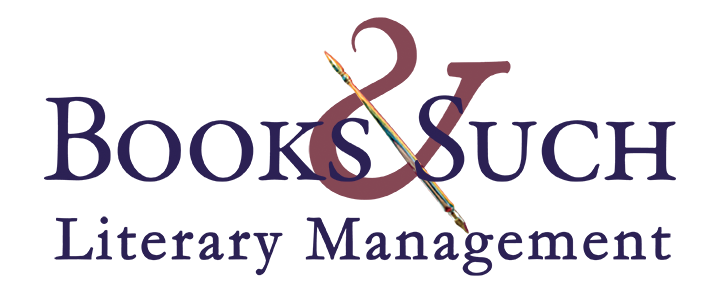Blogger: Wendy Lawton
A few years ago I accompanied Julie Klassen, one of my authors, on a week-long book tour. One of the best things about spending time in bookstores is that, among all the readers there to get autographs, we meet other writers. We savor the opportunity to talk about writing.
At one stop I remember we talked about different writing styles. Someone mentioned the writers who had just completed NaNoWriMo— National Novel Writing Month. (Also known as November.) That’s when an author writes an entire book in a month. That’s right– one month! For those authors who did it, I can picture you checking to see if you still have a marriage, cleaning out the pizza boxes piled in the garage and trying to make your legs work again. But, bravo!
That led to talking about how many words most of us write in a day. Julie does about 5000 words a day when she is first drafting. My friend Debbie Macomber has the same daily page goal– 20 pages per day, four days a week.
[Note: a manuscript page with one inch margins, double-spaced, equals 250 words. So when an author talks pages rather than words, it’s easy to do the math. When a writer talks pages, however, he is not referring to printed book pages– these vary widely depending on the print size, the trim size, etc. When a writer talks about how many pages his manuscript is or how many pages he’s done, he is always referring to manuscript pages. These days, with the word count served up by our word processing programs, we more often talk in number of words rather than page count.]I mentioned a full time writer friend who has a daily word count goal of 1200 words. We started to roll our eyes at the measly word count until my husband, Keith, took out his calculator and pointed out that a writer who did only 1200 words a day for 365 days would end up with 438,000 words a year. We all gulped. That would be more than four first drafts a year!
Now of course, no one is going to write for seven days a week but say the writer writes five days a week, taking two weeks off for vacation and a week at Christmas. That’s still 294,000 words a year. And at 1200 words a day there’s plenty of time left to revise, work on galleys and do marketing, right?
As someone who always crammed for exams and worked like a maniac closer to deadlines– I used to say I could do 5000 words a day with gusts up to 7500– this method of slow and steady seems like a miracle. What would life feel like with no guilt from procrastination?
My confession? I totally procrastinated on writing my blog. It’s 4:00 in the morning and I woke out of a sound sleep to remember– the blog!
So how about you? What’s your work style? Are you slow and steady? How about fast and steady? What are the pros and cons?
Photo Credit: © Littlemacproductions | Dreamstime.com – Finish Line Photo

My goal is adult thoughts written at a child’s reading level (because there are lots of Christian adults who don’t read well). Sometimes I have to slow down the process to keep it simple.
* I do some Bible studies, researching as I go. Three sentences on the Hebrew/Greek or geography behind a passage might take an hour, followed by three paragraphs in ten minutes.
* I use subtitles. Tweaking subtitles puts me at double digits per hour.
* Without an outline in my head, the words come slowly. When I get stuck, I count the progress in miles on my car, not words. Funny how passing scenery builds an outline.
* I don’t measure progress in word counts, I measure it in weeks and completed products (studies, chapters). But I’ve always been a big-picture first gal. But I’m with you, Wendy, on middle-of-the-night wakeups. Good thoughts bubble up while I sleep.
I like to write fast rough drafts, NaNoWrimo style, and then go slow and steady for revisions, passing the story back and forth with my critique partner, pausing to work on making comments on her current story, and going through draft after draft in layers before finally declaring it done. But that rush of getting a first draft done, yeah, I like to do it in one month or maybe two. Nano is so fun and freeing, you only have to get the words down … not make them any good, not yet at least. That is a task for the rest of the year!
I find that I do best when setting a goal that is well within my abilities. I used to thrive on steep challenges, but life has become enough of one that giving oneself an endless chain of mountains to climb engenders burnout, not confidence.
* So set a goal like 500 words – a short blog post – or a single scene. If you want to do more, fine, but don’t get into a race with your own pride lest you turn into the fabled Antipodean Concentric Bird, who flies in tighter and tighter circles until he disappears up his own…um, achievement.
Right now I write in fits and starts, as my schedule allows. That includes Sunday writing, as that’s the only day I can find a large chunk of time to write. On fiction, if I have the plot already in mind, I can produce 1,000 words in an hour, first draft quality. On non-fiction, I’m slower.
.
I have difficulty sitting down to write if I have less than an hour of time. It just seems “why bother?” For several months those hours to devote to writing have been hard to come by. Over the last month, however, I’ve had three out-of-town trips for work. In the hotel room in the evenings, after a full, tiring day of walking the construction site, I managed to write, and finish my novel-in-progress, my eighth. One evening I managed 3,000 words. On to the editing.
.
It’s all going to change in 2 months and 2 days. Then we’ll see what kind of work I can produce, and how fast.
Thank you, dear Wendy, for your confession. It makes us like you all the more.
My work style is a blend. I prefer to write fast on the first draft and then leave the manuscript to rest before editing it in small steady chunks.
NaNoWriMo and FiveMinuteFriday writing have helped me see how powerful “showing up” is. Creativity can happen whether we feel like it or not. Just show up.
Your blog post proved this too. 🙂
The pros of fast writing is the author is less likely to forget details already written; the story flows better; curiosity and excitement keep the author going if they are a partial pantster (like me). The main con of a fast draft is it will require a lot of grammar editing.
Blessings ~ Wendy Mac
I think the thing to remember that word counts is simply a tool.
Early in my writing, my goal of 2,000 words a day helped me get my butt in the chair. As my writing style developed into more of a three-steps-forward-two-steps-back system, I abandoned words counts in favor of tracking hours of actual writing.
Find what gets you to the goal and be ready to adjust it as you change!
I’m with you, Josh! I find that my results are so much better when I go for quality over quantity.
This past summer, my WIP had nearly stalled around the 50,000 word mark. The realities of life had converged and changed my housing, my work, and other facets of life, all of which demanded time and attention. By the end of each day, most of my creativity had been diverted and drained for other purposes. I resorted to flip-flopping my writing time. Instead of saving it until the end of the day, I started my day with writing. I set a minimum quota of 1,000 words per day, and not until I hit that number did I switch gears. Then I texted the latest total word count to a friend. The result? My stalled story began to pick up steam once again! Each morning I couldn’t wait to write my (measly) 1,000 words and send the new total to my friend. About 45 days later, I typed “The End.” Since then, the m.s. has been revised, then improved with the input of beta readers. My agent declared the final story “Awesome!” and it’s now submitted. My daily quota wasn’t huge, but daily consistency became the key. You know what they say about “little strokes” felling great oaks.
Wendy, what an interesting blog post. I find it fascinating to find out how people write. I have to admit, as you wrote the amounts of writing Julie Klassen and Debbie Macomber do, I found myself thinking, oh my, how I the world? My heart began to sink somewhat, until you told us about what your husband Keith said! Then I perked right back up! I am an extrovert, so I need my people time to prevent burn out. My writing partner and I are the same in this, but we are also revere and shoot for deadlines. Early on we both agreed, that we would set a realistic goal of writing two hours a day. This allowed us to be faithful to our family needs, volunteering for our communities, and some me time for quiet time and exercise. She likes to run. I prefer Zumba and free weights. We both have realized our lives will always be busy, but we enjoy writing, and sense and know it’s an important part of our lives. That said, if I’m in crunch time, I can do about 2,000 words a day without burnout. But my preference is around 1,000 words per day, except on Sunday. It’s what keeps me producing in a manner that can lend to being a long term writer with an extrovert nature.
When writing the rough drafts, I usually go fast. It feels like the story in my head is aching to get onto the page. But now that I’m learning more with my crit group, I imagine my next draft will drag out a little longer. 🙂
The hardest thing for me to do, even in spite of having all sorts of tools to help, is creating my characters. After that, I can create a rough synopsis. The first draft of my first book was written during NaNoWriMo and I hope to start writing my second book in earnest tomorrow. If I can get 2,500/day every weekday, I’ll have the weekends off and extra word count for sick days.
Angela, have you ever tried clipping character’s photos from ads or magazines? I did that, and just seeing actual faces suggested to me facets of their personality. The man in one ad looked like a slick-talking used-car salesman, and that’s what he became in my m.s. Another looked like a gruff ex-Marine, and that’s what he became for me. Attaching our made-up personalities to such real images can assist our imaginations as we write the story.
I don’t set word count goals for myself anymore because I found that I was going for quantity over quality. One thing I’ve learned by allowing myself to slow down is that what comes out is clean, which works for me.
It’s always cool to hear how others operate in their writing life. I always think that if it works, go with it, even if it goes against the popular thought.